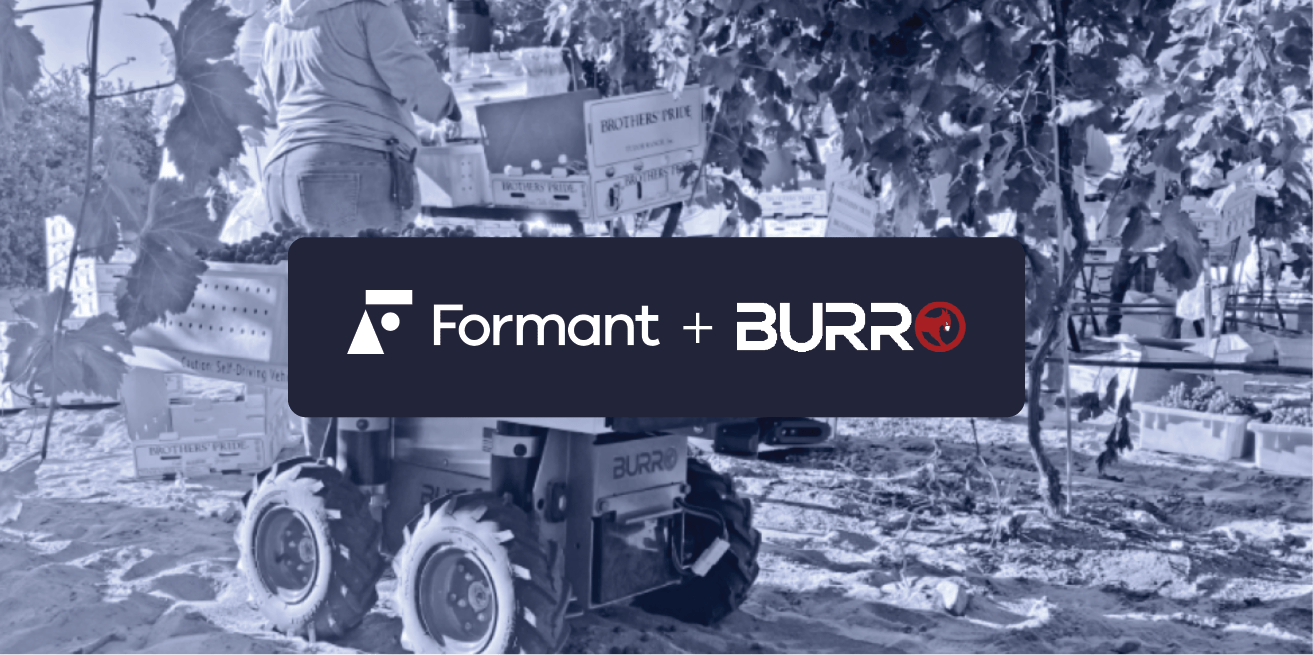Last week, I had the pleasure of attending the 2023 International Conference on Robotics and Automation (ICRA) in London. The conference brings together roughly 5,000 roboticists, students, and companies to talk about the latest happenings in the world of robotics.
Formant had a booth in the exhibit hall and sent in a team of four InFormants to take on the conference. We were excited to see everyone from the community and learn about the latest trends/research in robotics.

Before we dive into my takeaways, here are a few of my favorites from the exhibit hall.
Favorite booths:
- Boston Dynamics AI Institute
- Leo Rover
- Formant (obviously)
Favorite robots:
- ANYmal
- Diablo (by Direct Drive Tech)
- Unitree B1 (with wheels)
1. The “software tools” market for robotics has (finally?) arrived
When I walked the exhibit hall at ICRA 2023, one big thing stood out to me: the number of software companies present. In addition to Formant, there were booths from Viam, Foxglove, Cogniteam, Asimovo, and others.
Having spent the last couple of years feeling like the odd man out (as a software company at robotics events), it was very encouraging to see the momentum forming around software tooling for roboticists, a cohort that has been underserved for too long, in my opinion.
There was a lot of discussion around ROS, and it was great to see other companies from the ROS community exhibiting at ICRA (Clearpath, Foxglove, etc.). But it was also really interesting to see companies with a different take on the robot developer community, such as Viam, who are looking to win over beginner robot developers to their platform.
2. AI is hot
While it will undoubtedly take some time for the accelerations in generative AI to reach the robotics world en masse, there was a lot of talk at ICRA about how AI will continue to impact robotics. We had some great discussions with folks about Theopolis, Formant’s new GPT-powered feature for engaging with robot data via chat prompts.
The Boston Dynamics AI Institute’s booth also had one of the coolest demonstrations I’ve ever seen at a robotics conference. A BD Spot would take a person’s photo from multiple angles, then pick up a marker and draw a portrait of that person on an easel nearby.
Side note: I promise I didn’t use ChatGPT to write this blog post.
3. There’s a gap between academia and commercial applications of robotics
I will be the first to admit that most of the details from the PhD’s posters at ICRA went over my head- and that’s ok. At the end of the day I’m just an English major turned marketer who started his journey in robotics a couple of years ago.
But I was sometimes struck by the lack of understanding that students had around commercial robotics. Many of the students I spoke with did not have a basic understanding of the challenges faced by commercial robotics companies or the fundamentals of the business of robotics.
That’s not an issue if you’re a PhD student planning to stay in academia, but for grad students planning to pursue a career in industry, it would be very helpful to understand the business side of robotics. Furthermore, any roboticists planning to found companies or commercialize their research *need* to educate themselves before starting their companies.
4. There is no consensus on how to pronounce ICRA
Eye-CRA? Ih-CRA? Ee-CRA? I heard it all over the course of the week.
If anyone from IEEE/RAS is reading this, it might be worth a tweet to clarify 🙂




